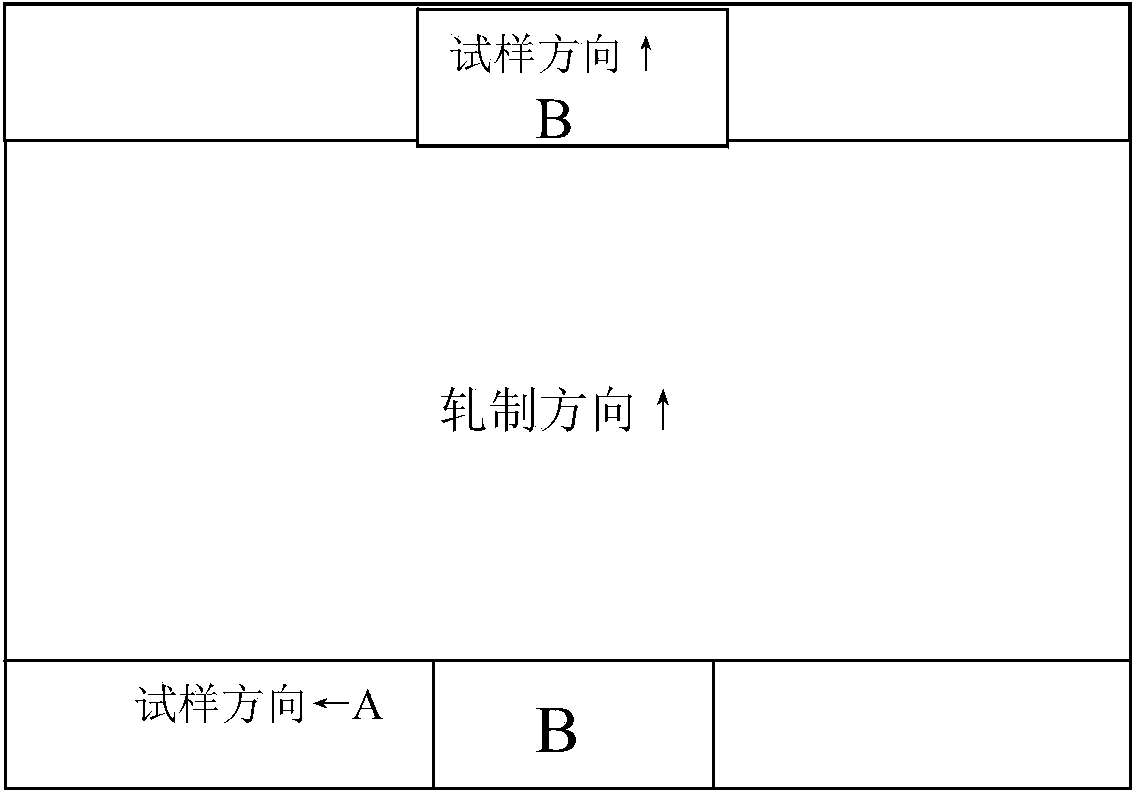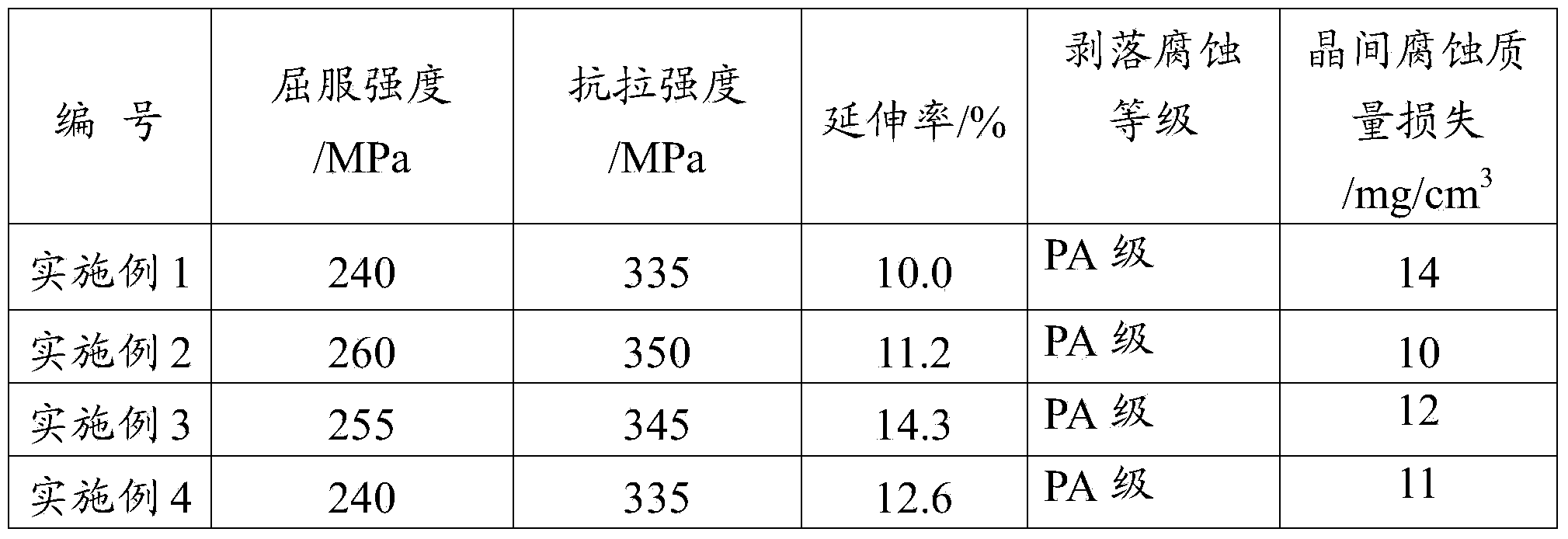Machining process of thick 5083 aluminum alloy plate for ships
A processing technology and aluminum alloy technology, which is applied in the processing technology field of marine 5083 aluminum alloy thick plates, can solve the problems of not improving the corrosion resistance of aluminum alloy plates, failing to meet the production approval requirements of ABS marine aluminum alloy plates, etc. The effect of mechanical properties and corrosion resistance
- Summary
- Abstract
- Description
- Claims
- Application Information
AI Technical Summary
Problems solved by technology
Method used
Image
Examples
Embodiment 1
[0037] Milling a 500mm 5083 aluminum alloy plate, heating the milled aluminum alloy plate at 450 degrees Celsius, and performing the first rolling on the heated plate, wherein the rolling temperature is 460 degrees Celsius, After rolling, the plate reaches 150mm, and the plate is cooled, wherein, after the cooling temperature reaches 300°C, the plate is subjected to the second rolling, and after the second rolling, the thickness of the plate is 50mm , the temperature of the plate is 250°C. Cut the plate after the above rolling process with 120mm scissors. After cutting, the plate is stretched, straightened and sawed to length. After acceptance and packaging, the 5083 aluminum alloy thick plate can be obtained.
[0038] The performance of the aluminum alloy thick plate is measured, wherein the corrosion resistance is tested for exfoliation corrosion sensitivity according to ASTM G66 or equivalent standards. Take a sample in the middle of the width of the two longitudinal end p...
Embodiment 2
[0040] Milling a 500mm 5083 aluminum alloy plate, heating the milled aluminum alloy plate at 450 degrees Celsius, and performing the first rolling on the heated plate, wherein the rolling temperature is 470 degrees Celsius, After rolling, the plate reaches 100mm, and the plate is cooled, wherein, after the cooling temperature reaches 300°C, the plate is subjected to the second rolling, and after the second rolling, the thickness of the plate is 35mm , the temperature of the plate is 200°C. Cut the plate after the above rolling process with 120mm scissors. After cutting, the plate is stretched, straightened and sawed to length. After acceptance and packaging, the 5083 aluminum alloy thick plate can be obtained.
[0041]The performance of the aluminum alloy thick plate is measured, wherein the corrosion resistance is tested for exfoliation corrosion sensitivity according to ASTM G66 or equivalent standards. Take a sample in the middle of the width of the two longitudinal end po...
Embodiment 3
[0043] Milling a 500mm 5083 aluminum alloy plate, heating the milled aluminum alloy plate at 450 degrees Celsius, and performing the first rolling on the heated plate, wherein the rolling temperature is 480 degrees Celsius, After rolling, the plate reaches 120mm, and the plate is cooled, wherein, after the cooling temperature reaches 300°C, the plate is subjected to the second rolling, and after the second rolling, the thickness of the plate is 40mm , the temperature of the plate is 220°C. Cut the plate after the above rolling process with 100mm scissors. After cutting, the plate is stretched, straightened and sawed to length. After acceptance and packaging, the 5083 aluminum alloy thick plate can be obtained.
[0044] The performance of the aluminum alloy thick plate is measured, wherein the corrosion resistance is tested for exfoliation corrosion sensitivity according to ASTM G66 or equivalent standards. Take a sample in the middle of the width of the two longitudinal end p...
PUM
| Property | Measurement | Unit |
|---|---|---|
| thickness | aaaaa | aaaaa |
| yield strength | aaaaa | aaaaa |
| tensile strength | aaaaa | aaaaa |
Abstract
Description
Claims
Application Information
 Login to View More
Login to View More - R&D Engineer
- R&D Manager
- IP Professional
- Industry Leading Data Capabilities
- Powerful AI technology
- Patent DNA Extraction
Browse by: Latest US Patents, China's latest patents, Technical Efficacy Thesaurus, Application Domain, Technology Topic, Popular Technical Reports.
© 2024 PatSnap. All rights reserved.Legal|Privacy policy|Modern Slavery Act Transparency Statement|Sitemap|About US| Contact US: help@patsnap.com









